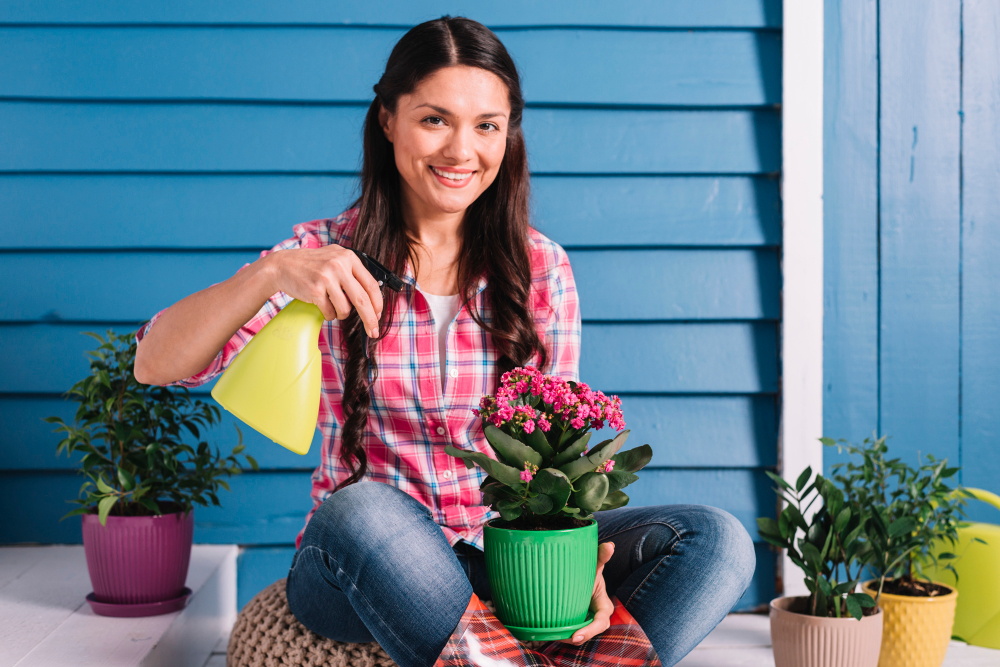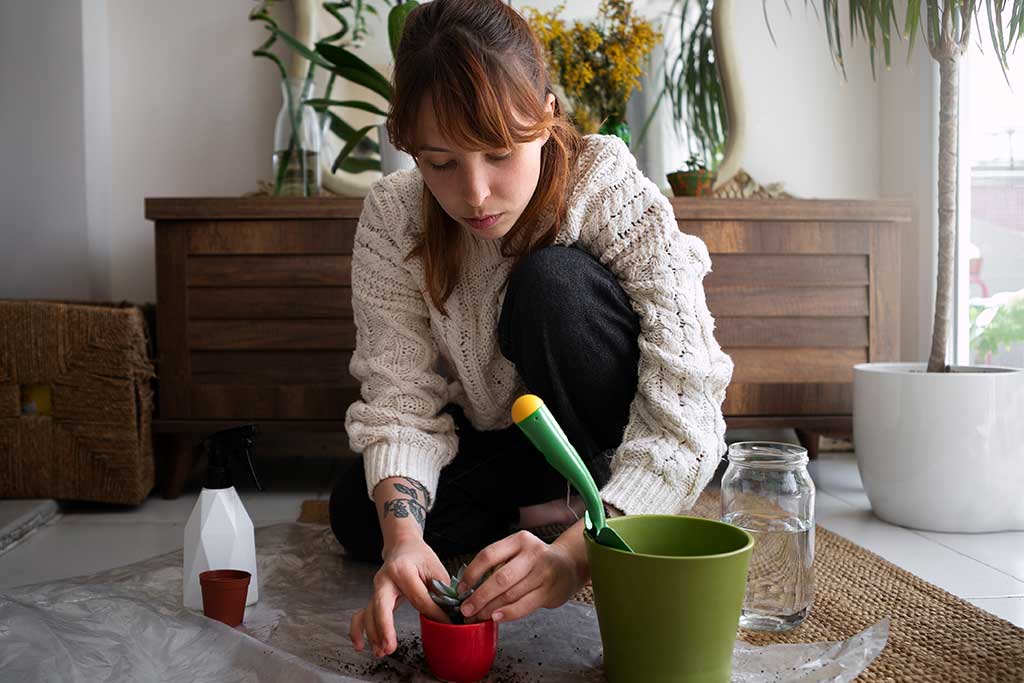Now Reading: Discover the Joy of Outdoor Gardening: A Simple Guide for Everyone
-
01
Discover the Joy of Outdoor Gardening: A Simple Guide for Everyone
Discover the Joy of Outdoor Gardening: A Simple Guide for Everyone

Have you ever walked past a neighbour’s home and been mesmerised by the sight of bright red roses, the fresh green leaves of a spinach plant, or the calming presence of a tall Tulsi plant? That simple, beautiful magic is the result of outdoor gardening. It is a practice as old as civilization itself, yet it remains one of the most rewarding and grounding hobbies you can pick up today.
But what exactly is outdoor gardening? At its heart, outdoor gardening is the art and science of growing plants under the open sky. It is about working with a small piece of land, whether it is a vast backyard, a small patch in your front yard, or even a collection of pots on your balcony or terrace, to create life. It is not just about planting a seed and watching it grow; it is about building a personal relationship with nature. It is about getting your hands dirty, feeling the sun on your back, and becoming a creator of your own little green world.
For many of us in India, the idea of gardening might feel a little distant. We live in fast-paced cities, in apartments with limited space. We think gardening is a hobby for those with big bungalows and plenty of free time. But this is a common misunderstanding. Outdoor gardening is incredibly flexible and adaptable. It is for everyone—the college student with a single pot, the busy professional with a sunny balcony, and the retiree with a small garden patch.
More Than Just Plants: The Deeper Meaning of Gardening
When you start gardening, you quickly realise it is about much more than just the plants. It is a activity that nourishes your body, mind, and soul.
First, it is a wonderful form of exercise. The simple acts of digging, planting, weeding, and watering involve bending, stretching, and lifting. This is a natural way to keep your body active without the need for a gym. It improves your flexibility and strength.
Perhaps the most immediate benefit is for your mind. In our busy lives filled with screens and constant noise, the garden becomes a sanctuary of peace. The repetitive and mindful nature of gardening tasks—like pruning leaves or watering plants—has a meditative quality. It helps to reduce stress, lower anxiety, and bring a sense of calm. Many gardeners will tell you that their time in the garden is their therapy. It is a place to forget your worries and focus on the simple, satisfying task at hand.
Furthermore, there is a deep sense of satisfaction and accomplishment that comes from growing something with your own hands. The moment you see the first tender shoot emerge from the soil, or when you pluck your first tomato or lemon, a unique feeling of pride and joy washes over you. You have not just bought something from the market; you have created it. This connection to the cycle of life—from seed to plant—is a powerful and humbling experience.
Starting Your Own Outdoor Garden: A Simple Beginning
The thought of starting a garden can seem overwhelming. There is so much information available that it is easy to get confused. But remember, every expert gardener started as a beginner. The key is to start small and simple.
The very first step is to observe your space. Where does the sunlight fall? Most flowering plants and vegetables need at least 5-6 hours of direct sunlight. Watch your balcony, terrace, or yard for a full day. Is it sunny all day, or is it shaded by other buildings? This will decide what you can grow. A sunny spot is perfect for tomatoes, peppers, and marigolds (Genda). A shadier spot is better for plants like spinach (Palak), mint (Pudina), and ferns.
Next, decide what you want to grow. This is the most exciting part! A good idea for beginners is to start with plants that are easy to grow and are useful in our daily Indian life.
You could start a Kitchen Garden: Imagine adding fresh, pesticide-free coriander (Dhaniya), mint (Pudina), or green chillies (Hari Mirch) to your food, picked just minutes before. These are some of the easiest plants to grow in pots. Tomatoes, lemons in small trees, and curry leaves (Kadi Patta) are also great choices.
Or, you could start a Flower Garden: If you want to add colour and beauty to your home, flowers are the way to go. Marigolds (Genda) are a classic Indian flower, robust and bright. Jasmine (Mogra) will fill your evenings with a beautiful fragrance. Hibiscus (Gudhal) and Roses (Gulab) are also very popular and do well in our climate.
Do not forget our traditional plants: A Tulsi (Holy Basil) plant is considered sacred in many Indian households and is also known for its medicinal properties. Aloe Vera (Ghritkumari) is another must-have plant for its cooling gel that can be used for skin and health.
The Basic Tools of the Trade
You do not need to buy every gardening tool in the shop to begin. A few basic items are enough to get you started. The most important item is a good container. You can use anything that has drainage holes—clay pots (which are excellent), plastic pots, or even recycled containers like old buckets or paint cans. Just make sure you make a few holes at the bottom for excess water to drain out.
You will also need a small trowel (a hand-held shovel) for digging small holes and moving soil. A watering can is essential to gently water your plants without washing away the soil. And finally, you need the growing medium—the soil. Do not just use soil from the ground, as it might be too hard and may contain pests. It is best to buy a good potting mix from a local nursery. This soil is light, fluffy, and has the right nutrients to help your plants grow strong.
The Simple Act of Caring
Caring for your garden is a gentle, daily routine. Watering is the most crucial task. The trick is to water deeply but not too often. Push your finger an inch into the soil. If it feels dry, it is time to water. If it feels moist, wait for another day. Overwatering is a common mistake that can harm the plants more than underwatering.
As your plants grow, you will notice unwanted plants, called weeds, also popping up in your pots. These weeds compete with your plants for food and water, so it is good to pull them out gently from the root every few days. This is a very peaceful and satisfying task.
Plants, like us, need food to grow. The soil’s nutrients get used up over time. You can feed your plants naturally using kitchen waste. Compost is often called “black gold” for gardeners. You can make it at home by collecting vegetable peels, fruit scraps, dried leaves, and eggshells in a container. Over a few months, this waste decomposes into a rich, dark compost that you can mix with your soil to make it incredibly fertile. Another excellent natural fertiliser is cow dung manure, which is easily available in nurseries across India.
Your Garden, Your Joy
Outdoor gardening is a journey of learning. You will have successes, and you will also face challenges. Sometimes a plant may not do well, or pests might appear. But do not be disheartened. Each challenge is an opportunity to learn more. Talk to your local nursery gardener, they are a treasure trove of practical knowledge.
In the end, your outdoor garden is your own personal creation. It is a space where you can connect with the rhythms of nature, right in your own home. It is a place of beauty, a source of fresh food, and a sanctuary for your well-being. So, take that first step. Get a pot, some soil, and a packet of seeds. Plant that first seed, water it with hope, and watch as a small miracle unfolds in your life. Happy gardening
- Advantage Sample 1
- Disadvantage Sample 1
Stay Informed With the Latest & Most Important News
Previous Post
Next Post
-
 01Does Free Money Exist? The Real Story of How Your Passive Income Gets Taxed in India
01Does Free Money Exist? The Real Story of How Your Passive Income Gets Taxed in India -
 02Beyond the First Rupee: Building Your Personal System for Passive Income Success in India
02Beyond the First Rupee: Building Your Personal System for Passive Income Success in India -
 03Your Journey to Financial Freedom: A Simple Guide to Building Passive Income in India
03Your Journey to Financial Freedom: A Simple Guide to Building Passive Income in India -
 04Your Extra Income Journey: Top Side Hustles to Boost Your Earnings in India
04Your Extra Income Journey: Top Side Hustles to Boost Your Earnings in India -
 05The Right Way for Kids to Learn Technology: A Guide for Indian Parents
05The Right Way for Kids to Learn Technology: A Guide for Indian Parents -
 06A New World at Your Fingertips: A Simple Guide to Technology Tutorials for Seniors
06A New World at Your Fingertips: A Simple Guide to Technology Tutorials for Seniors -
 07Your Guide to Learning Technology in 2025: Simple, Smart, and Effective
07Your Guide to Learning Technology in 2025: Simple, Smart, and Effective






























